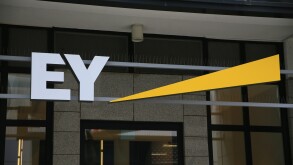Most multinational companies established fixed sales-based royalties for their intra-group licensing of intangibles in pre-COVID-19 times. The appropriateness of the underlying royalty rates has mostly been defended by internal or external comparable uncontrolled prices (CUPs), in the latter case through database benchmarking.
Such benchmarking solutions are common in international TP compliance, despite conceptual criticism expressed in the OECD 2017 Transfer Pricing Guidelines and practical field audit challenges. Tax authorities in countries like Germany point out that company-specific intangibles are unique by nature and CUPs suffer from great comparability problems and, therefore, royalty rate benchmarkings are inherently flawed.
During the COVID-19 pandemic, fixed royalty schemes may generate a significant financial burden and risk for multinationals. The licencees are often ‘entrepreneurial’ companies, which retain the residual profit. In 2020 and subsequent years, many are likely to become heavily loss-making. Licensees paying significant sales-based royalties in a loss-making situation is economically questionable, tax-inefficient, and may create a financial burden for the group in difficult times. Also, in subsequent tax audit periods, tax authorities in loss-making jurisdictions may challenge such payments as a driver for non-arm’s-length losses.
However, simplistic solutions like merely abstaining from royalty payments as long as the licensee is heavily loss-making are potentially too pragmatic and generate other risks in the territory of the licensor, where tax authorities also experience a fiscal draught in taxation revenue. After all, they can plausibly argue that the royalties are not the reason for a loss situation for the licensee—this is a more general COVID-19-related economic crunch—and the underlying licensed intangibles continue to be valuable as such.
Given the circumstances, it seems a better strategy not to waste the opportunity that arises from a changed tax regulatory environment during the crisis. A royalty rate in a license agreement can always be corroborated by a profit split analysis. After all, the licensor contributes an intangible, whereas the licensee (as an entrepreneurial company) normally also contributes some valuable functions to justify being a residual profit taker. Given the critical stance on license benchmarking adopted by tax authorities in many jurisdictions, a profit split analysis for pre-crisis years can be undertaken to support the royalty rates established in good economic times and supplemented with the TP documentation for those past years.
The analysis can then reveal why the royalty rate established in pre-crisis times would no longer meet the arm’s-length standard in crisis times, since it would distort residual profit allocation in favour of the licensor. A clear analysis would be at hand to let the legacy TP solution evolve naturally into a more flexible arrangement where it might even be conceivable, depending on circumstances, that the licensor renders operational support payments to the licensee instead of upholding high royalty charges.
The benefit of this more flexible royalty system is that it can be extended to post-crisis years without further disruptions. Tax authorities in the licensee’s jurisdiction will naturally accept the reduction of royalty payments to the licensor in the crisis years. By accepting this, they would also have to accept the principle that effective royalty rates in post-crisis years may increase to above pre-crisis levels if the economic recovery entails a significant increase in profits.
In summary, the financial impact of COVID-19 will likely provide multinationals the opportunity for a smooth transition of their intangible contributions into more flexible, residual profit sharing transfer pricing arrangements, which could be sustainable in the short-, medium-, and long-term, generating short-term financial benefits when they are most needed for the group and providing a consistent analytical and BEPS-compliant framework overall.
Yves Hervé
T: +49 69 710 447 502
Philip de Homont
T: +49 69 710 447 508













